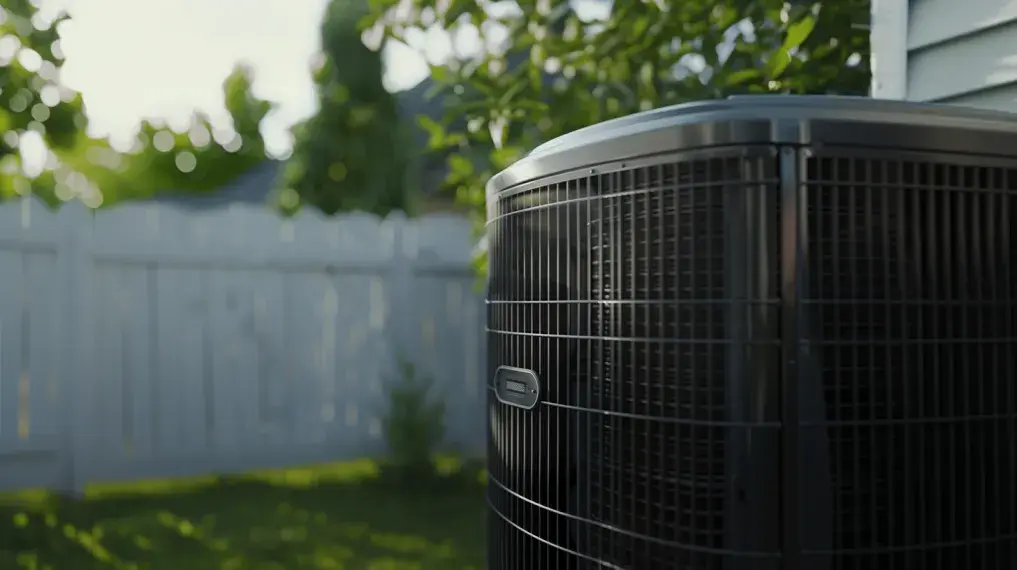Your heat pump is the unsung hero of your home’s comfort, working tirelessly year-round to keep you warm in the winter and cool in the summer. But like all hardworking equipment, it won’t last forever. Knowing when to repair it and when to replace it can save you money, improve your comfort, and boost your home’s efficiency.
If your system is showing its age, you’re facing a major repair, or you’re just curious about upgrading, this guide will walk you through everything you need to know about heat pump replacement.
Signs It Might Be Time for a Replacement
While some issues can be fixed with a simple repair, certain red flags point toward a more permanent solution.
- Age: The most straightforward factor is age. The average lifespan of a heat pump is 10 to 15 years. If your system is within or beyond this range and experiencing problems, replacement is often more cost-effective than pouring money into an aging unit.
- Frequent and Costly Repairs: Are you on a first-name basis with your HVAC technician? If you’re facing repair bills year after year for issues like refrigerant leaks, compressor failures, or electrical problems, those costs add up quickly. A good rule of thumb is the $5,000 rule: multiply the age of your unit by the repair cost. If the result is more than $5,000, consider replacement.
- Rising Energy Bills: As heat pumps age, their efficiency declines. If you’ve noticed a steady, unexplained increase in your monthly energy bills, your system is likely working harder than it should to maintain the temperature. A new, high-efficiency model could pay for itself in energy savings over time.
- Inconsistent Temperatures and Comfort: Are some rooms too hot while others are too cold? Does your system struggle to reach the thermostat setting? This could indicate your old heat pump can no longer effectively distribute air throughout your home.
- Excessive Noise: Heat pumps aren’t silent, but they shouldn’t be disruptive. Strange noises like grinding, screeching, rattling, or loud banging are signs of significant internal mechanical failure, often warranting a replacement.
- Using R-22 Refrigerant: If your system still uses R-22 refrigerant (Freon), you need to be aware that its production was phased out due to environmental regulations. This means it’s now extremely expensive to recharge your system if there’s a leak. A retrofit is possible but often not worthwhile on an old unit.
The Benefits of Replacing Your Old Heat Pump
Replacing an old, struggling heat pump isn’t just about avoiding breakdowns—it’s an investment with immediate and long-term returns.
- Significantly Lower Utility Bills: Modern heat pumps are vastly more efficient than those made even 10 years ago. Look for units with a high SEER2 (Seasonal Energy Efficiency Ratio) for cooling and a high HSPF2 (Heating Seasonal Performance Factor) for heating. Upgrading can cut your heating and cooling costs by 20-40% or more.
- Enhanced Home Comfort: New models offer features like variable-speed compressors and fans that adjust their output in small increments. This eliminates temperature swings, reduces humidity better in the summer, and provides quieter operation.
- Improved Reliability and Warranty: A new system comes with a new manufacturer’s warranty (typically 10 years on parts) and peace of mind. You’ll avoid the stress and inconvenience of unexpected breakdowns.
- Increased Home Value: An updated, efficient HVAC system is a major selling point for potential homebuyers and can increase your property’s value.
- Reduced Carbon Footprint: By using less electricity, a new high-efficiency heat pump is a greener choice for your home and the planet.
Key Considerations for Your Replacement Project
- Sizing is Critical: Bigger is not better. A system that is too large will “short cycle” (turn on and off frequently), leading to poor humidity control, uneven temperatures, and increased wear. A system that is too small will run constantly and struggle to keep up. A professional contractor will perform a Manual J calculation to determine the perfectly sized unit for your home’s exact square footage, insulation, windows, and layout.
- Efficiency Ratings Matter: Understand the labels:
- SEER2: Measures air conditioning efficiency. The federal minimum is 14.3, but high-efficiency models range from 16 to over 20.
- HSPF2: Measures heating efficiency. The federal minimum is 7.5, with top models exceeding 9.5.
- A higher number means greater efficiency and lower operating costs.
- Choosing the Right Contractor: This is the most important step. Look for a licensed, insured, and experienced HVAC company with excellent reviews. Get at least three detailed estimates. A quality contractor will ask questions, perform a load calculation, and explain your options without pressuring you.
- Understanding Costs: The total cost of a heat pump replacement can vary widely ($5,000 – $15,000+) based on:
- The unit’s efficiency and capacity
- The complexity of the installation (e.g., ductwork modifications)
- Your geographic location
- Any additional electrical work needed
- Financing and Incentives: Don’t let upfront cost deter you. Many HVAC companies offer financing options. Furthermore, check for federal tax credits, state rebates, and utility company incentives for installing high-efficiency equipment. These can significantly reduce your net cost.
The Bottom Line
Replacing a heat pump is a significant decision, but it’s also an opportunity to upgrade your home’s comfort, efficiency, and value. If your system is old, unreliable, or inefficient, the long-term savings and benefits of a new unit will likely outweigh the cost of continuing to maintain the old one.
Start by getting a professional assessment from a trusted HVAC contractor. They can provide the clarity you need to make a confident investment in your home’s comfort for years to come.

